《ENVIRONMENTAL TAX INITIATIVES AND MULTILATERAL TRADE AGREEMENTS:DANGEROUS COLLISIONS》
| 作者 | RICHARD A.WESTIN 编者 |
|---|---|
| 出版 | KLUWER LAW INTERNATIONAL |
| 参考页数 | 274 |
| 出版时间 | 1997(求助前请核对) 目录预览 |
| ISBN号 | 9041109803 — 求助条款 |
| PDF编号 | 813697278(仅供预览,未存储实际文件) |
| 求助格式 | 扫描PDF(若分多册发行,每次仅能受理1册) |
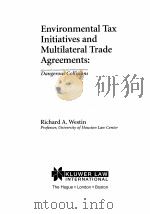
Introduction1
CHAPTER 1: GATT AND ITS HISTORY5
The History of GATT5
GATT’s Principal Obligations6
Organization of GATT/WTO8
Dispute Resolution Procedures8
Bad Blood10
The Classical Case for Free Trade and Its Recent Critics12
GATT’s rephrased trade purposes, softened as to environmental issues13
The “Nonclassic” Reasons for International Trade14
Conclusion15
Appendix A: List of Major GATT Articles16
Appendix B: Amendments to the GATT18
CHAPTER 2: CLASSIFYING ENVIRONMENTAL TAX MEASURES21
A Tax Vision22
Environmentally-Related Tax Measures23
Categories of Environmental Taxes and Tax Initiatives25
1.Tax Subsidies that Encourage Good Acts25
2.Withdrawal of Tax Burdens28
3.Withdrawal of Fiscal Bene№its30
4.Rules that Impose Fiscal Burdens31
Miscellaneous Taxes and Tax Initiatives39
CHAPTER 3: MICROECONOMIC APPROACHES TOENVIRONMENTAL TAXES43
“Pigouvian Taxes”45
“Market Failure” and a Remedial Tax on Output46
What to Do with the Tax Revenues?47
Setting the Tax47
An Emissions Tax to Restrict Pollution48
Microeconomic Expression of the Emissions Tax48
Implications of Defective Information in Setting Emissions Tax50
Marketable Emissions Trading Rights Compared51
Free Trade and Externalities52
The Race to the Bottom - Is it Real?53
The Problem of Socialist Countries54
The Problem of Unintended Consequences54
Why Economics Does Not Have All the Answers54
CHAPTER 4: THE POLLUTER PAYS PRINCIPLE AND ITS EARLY DEATHIN THE INTERNATIONAL TRADE ARENA57
The OECD’s Polluter Pays Principle57
The Superfund Tax Dispute and the Death of the PPP in International Trade Disputes58
Recommendation60
CHAPTER 5: THE ART OF TAX POLICY61
National Goals61
International Goals64
CHAPTER 6: BORDER TAX ADJUSTMENTS UNDER MULTILATERAL TREATIES65
ENVIRONMENTAL TAXES AND BORDER TAX ADJUSTMENTS65
Summary65
Introduction67
Ⅰ.History and Rules of Border Tax Adjustment Under GATT69
1.The Distinction Between Direct and Indirect Taxes69
(a) The Distinction69
(i) GATT Provisions69
(ii) Working Party Reports72
(iii) The 1979 Subsidies Code72
(iv) Challenge to the Distinction Between Direct and Indirect Taxes73
(b) Summary75
2.Which Indirect Taxes are Adjustable75
(a) The Present Rules75
(i) GATT Provisions75
(ii) Working Party Reports77
(iii) The 1979 Subsidies Code78
(b) Panel Reports79
(i) The Petroleum Tax Case79
(ii) The Tuna/Dolphin Case81
(c) The Uruguay Round Final Act84
(d) Summary85
Ⅱ.History and Rules of Border Tax Adjustment Under the EC Treaty85
1.The Distinction Between Direct and Indirect Taxes85
(a) The Distinction85
(i) EC Treaty Provisions85
(ii) Case Law86
(b) Summary87
2.Which Indirect Taxes are Adjustable87
(a) The Present Rules87
(b) Case Law89
(c) Summary90
3.Relationship Between Domestic and Imported Products91
(a) EC Rules: Like or Competing Products91
(b) Case Law91
(i) Similar Products91
(ii) Prohibition on Discrimination95
4.Least Restrictive Measure96
Summary97
5.Post Script: Evolution Towards the Origin Principle for Intracommunity Trade97
Ⅲ.Review of Economic Rationale Underlying Existing Distinctions98
1.The Distinction Between Direct and Indirect Taxes98
2.The Distinction Between Physically Incorporated and Other Inputs100
Ⅳ. Eligibility of Environment-Related Taxes for Border Tax Adjustment102
1.Fiscal-Related Environmental Measures (FREMS)102
2.Eligibility of FREMS for Tax Adjustment102
(a) Differential Treatment of Different Products103
(b) Differential Treatment of Like Products Based on Taxes on Inputs103
(c) Differential Treatment of Like Products Based on Different Process, Raw Material or Origin104
CHAPTER 7: THE PROPER INCIDENCE OF ENVIRONMENTAL TAXES HAVING AN INTERNATIONAL ASPECT107
Incidence of taxation defined107
Review of the principal types of taxes108
Proper incidence of steering taxes108
Proper incidence of trust fund taxes108
Proper incidence of Pigouvian taxes109
Pigouvian taxes: If the harm occurs in the nation of export111
If the Harm Occurs in the Nation of Import114
The hybrid case of mixed harm115
Global externalities116
Summary and proposals116
CHAPTER 8: THE CONCEPT OF A LIKE PRODUCT119
Thesis120
Text of GATT120
Specific Interpretations124
Superfund Tax Case - 1987124
Japan Alcohol Case - 1987124
Thai Cigarette Case - 1990125
Tuna Dolphin Decisions - 1991126
US Alcohol Case - 1992126
Cafe Decision - 1994127
“United States’ Automobile Luxury Tax”127
“Gas Guzzler Tax”128
The Cafe Decision130
Impact of the Automobile Decisions131
The Gasoline Decision132
Some proposed answers132
Remaining uncertainties133
Likeness in Other Contexts135
Appendix: National Treatment on Internal Taxation and Regulation136
CHAPTER 9: ENVIRONMENTAL TAXES UNDER NAFTA AND SUBSIDIES UNDER NAFTA AND THE EUROPEAN UNION139
Purpose of the Chapter139
Background to NAFTA139
Border Tax Adjustments Under NAFTA142
Export Taxes142
Environmental Taxes142
Implications of an Environmental Tax on Imports142
State and Provincial Taxes143
Subsidies Under NAFTA143
Subsidies Under the European Union Treaty Provisions144
Appendix: Excerpts from NAFTA, Chapter Seven, Agriculture and Sanitary and Phytosanitary Measures146
CHAPTER 10: WTO RESTRICTIONS ON SUBSIDIES151
GATT Subsidies Code152
Trade in Goods: Introduction152
Some Examples153
WTO Restrictions on Tax Adjustments for Exports153
Restrictions on Export Subsidies: Domestic Incentives157
Export Subsidies Under the Uruguay Round Subsidies Agreement157
The Subsidy Must Confer a Benefit159
The Subsidy Must Be Speci№ic160
The Specific Subsidy Must Be Actionable or Prohibited161
Non-Actionable Subsidies163
Research and Development as a Nonactionable Subsidy163
Pollution control facilities as Nonactionable Subsidies164
Lack of Regulation as Not a Subsidy165
The Enigma of Credits to Consumers166
Trade in Services166
Conclusions167
Annex B - Part Ⅱ: Prohibited Subsidies169
Exhibit A170
Exhibit B172
CHAPTER 11: POWER PLAY: USING GATT EXCEPTIONS AGGRESSIVELY TO AVOID GATT LIMITS ON ENVIRONMENTAL TAX INITIATIVES181
National Security181
Article XX(g) Conservation of Resources184
Article XX(b): Protection of Life or Health188
Earlier Treaties and Extraterritoriality191
Summary191
CHAPTER 12: BLUEPRINTS FOR “GATT-PERMITTED” ENVIRONMENTAL TAX INITIATIVES193
Ⅰ.Introduction193
Ⅱ.Environmental taxes193
A.Permitted Tax Burdens194
B.Border Taxes that Are Open to Doubt195
C.Prohibited Taxes196
Ⅲ.Tax Subsidies196
A.Fiscal Incentives that Are Permitted196
B.Fiscal Incentives that Are Open to Doubt197
C.Fiscal Incentives that Are Prohibited198
Ⅳ Taxes and Tax Incentives Under GATT Exemptions198
CHAPTER 13: CONCLUSIONS AND RECOMMENDATIONS199
The conflicting theoretical bases underlying environmental taxes199
Change the National Targets201
Coordinate GATT with Welfare Economics201
Coordinate GATT with the OECD Treaty202
Be Realistic About the Legal Framework202
Domestic initiatives203
Pragmatically Limit the Process-Product Distinction203
“Internationalize” Domestic Tax Initiatives204
Develop a Strategy for Dealing with Border Taxes204
Improvements to WTO processes205
Provide WTO Advisory Opinions on Pressing Environmental Tax Issues205
Convene the Committee on Trade and the Environment205
Establish Guidelines for Deciding Environmental Tax Disputes205
Define Some Terms205
Harmonize environmental taxes207
Harmonize National and International Environmental Tax Initiatives207
Permit Countervailing Import Duties207
A Specific Agenda for the United States208
Experiment with Environmental VATS208
Pass an Oil Import Fee209
How powerful could environmental taxes be, and not violate GATT/WTO?209
Closing210
Bibliography213
Index245
1997《ENVIRONMENTAL TAX INITIATIVES AND MULTILATERAL TRADE AGREEMENTS:DANGEROUS COLLISIONS》由于是年代较久的资料都绝版了,几乎不可能购买到实物。如果大家为了学习确实需要,可向博主求助其电子版PDF文件(由RICHARD A.WESTIN 1997 KLUWER LAW INTERNATIONAL 出版的版本) 。对合法合规的求助,我会当即受理并将下载地址发送给你。
高度相关资料
-
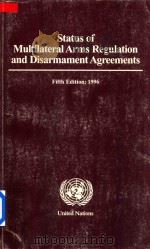
- Status of Multilateral Arms Regulation and Disarmament Agreements Fifth Edition 1996
- 1997 United Nations
-

- ATOMIC AND MOECULAR COLLISIONS
- 1979 TAYLOR & FRANCIS
-
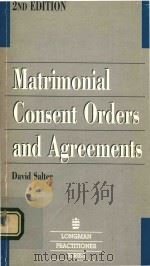
- MATRIMONIAL CONSENT ORDERS AND AGREEMENTS
- 1991 LONGMAN
-
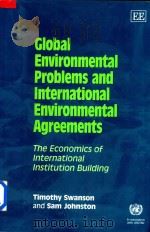
- Global Environmental Problems and International Environmental Agreements the Economics of Internatio
- 1999 Edward Elgar
-

- International and European Trade and Environmental Law After the Uruguay Round
- 1995 Kluwer Law International
-
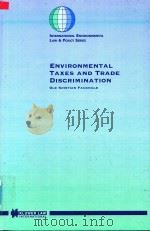
- Environmental Taxes and Trade Discrimination
- 1998 Kluwer Law International
-

- PERSPECTIVES ON TAX DESIGN AND TAX REFORM
- 1984 ASHISH PUBLISHING HOUSE
-
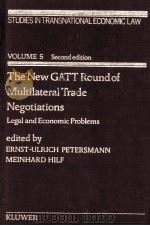
- THE NEW GATT ROUND OF MULTILATERAL TRADE NEGOTIATIONS LEGAL AND ECONOMIC PROBLEMS SECOND UPDATED E
- 1991 KLUWER LAW AND TAXATION PUBLISHERS
-

- Trade and environmental law in the European community
- 1996 Clarendon Press
-

- LAW AND ITS LIMTATIATIONS IN THE GATT MULTILATERAL TRADE SYSTEM
- 1985 MARINUS NIJHOFF PUBLISHERS
-
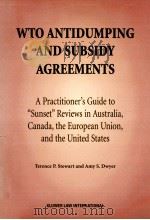
- WTO ANTIDUMPING AND SUBSIDY AGREEMENTS
- 1998 KLUWER LAW INTERNATIONAL
-
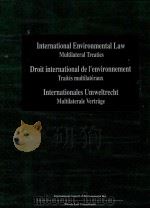
- LNTERNATIONAL ENVIRONMENTAL LAW MULTILATERAL TREATIES DROIT INTERNATIONAL DE I ENVIRONNEMENT TRAITES
- 1974 KLUWER LAW LNTERNATLONAL
-
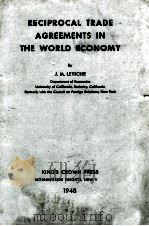
- RECIPROCAL TRADE AGREEMENTS IN THE WORLD ECONOMY
- 1948 KING’S CROWN PRESS
-

- TRADE AGREEMENTS A STUDY IN DEMOCRATIC METHODS
- 1940 COLUMBIA UNIVERSITY PRESS
-
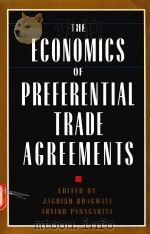
- THE ECONOMICS OF PREFERENTIAL TRADE AGREEMENTS
- 1996 AMERICAN ENTERPRISE INSTITUTE
提示:百度云已更名为百度网盘(百度盘),天翼云盘、微盘下载地址……暂未提供。➥ PDF文字可复制化或转WORD